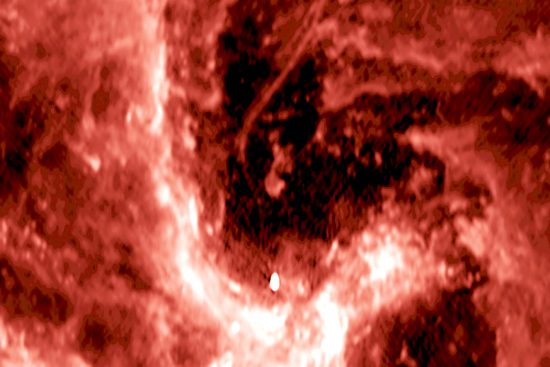
Mar 6, 2019
Lightning phenomena vary in magnitude.
“Thunder is good, thunder is impressive; but it is lightning that does the work.”
— Mark Twain
Lightning, along with other electrical manifestations, includes a phenomenon called, “transverse electric currents” with the main discharge channel. Slow-motion videos of lightning reveal multiple leader strokes descending from the clouds, while less visible electric filaments rise from the ground, from grass, fence posts, trees, etc. When two points of contact are made, the cloud-to-ground potential discharges, drawing charge flow from several square kilometers.
Surface lightning strokes on Earth are accompanied by “corona arcs”, discharges at right angles to the main channel. They look like “tributaries” joining the primary discharge. Cloud-to-ground lightning causes those tributaries to be parallel because of electromagnetic forces between them. Branching burns or cuts in various materials at different scales are sometimes called “Lichtenberg figures”.
Lichtenberg figures are named after Georg Christoph Lichtenberg. They form when lightning bolts strike some material on Earth – it can be soil or even human tissue. They are also artificially generated in blocks of acrylic plastic. Lichtenberg figures are also seen in the south polar region of Mars, and are referred to in previous Pictures of the Day as Martian “spiders”.
Plasma formations in space share a connection with laboratory experiments, so the scalability of plasma phenomena must be considered. Plasma discharges can produce the same formations irrespective of size. The same patterns appear on planets, around stars, and inside galaxies.
So-called “streamers” are seen inside the shells of gas and dust that make up the haze around comets. Those electromagnetic threads retain their alignments despite months of travel through the Solar System. As mentioned, the braided filaments are a sign of helical Birkeland currents.
Scientists analyzing data from the Chandra X-Ray Telescope discovered “threadlike structures” emerging from M82, one of the larger galaxies in the constellation Virgo. The filaments extend for thousands of light years and contain groups of stars enclosed by glowing, ionized shells. Researchers refer to those rapidly moving star cluster knots as “fireballs”, because they look like flaming projectiles shooting out from the galaxy.
How long plasma phenomena last is proportional to size. Sparks lasting two or three microseconds in the laboratory might scale up to decades-long events at stellar scales, or millions of years at the galactic scale. Filamentary shapes appear to exist no matter where investigators search. The forces exerted by electrified plasma contained in the twisting filaments of Birkeland currents dominate the Universe. They flow in a cosmic circuit that comes into our field of view and then back out into the void, with long-range attraction between them.
In the image at the top of the page, the Milky Way√ also displays streamers of material moving away from its equatorial plane at right angles. Corona arc discharges, an electrical phenomenon associated with terrestrial lightning, are occurring on a thousands of light-years scale.
Stephen Smith












